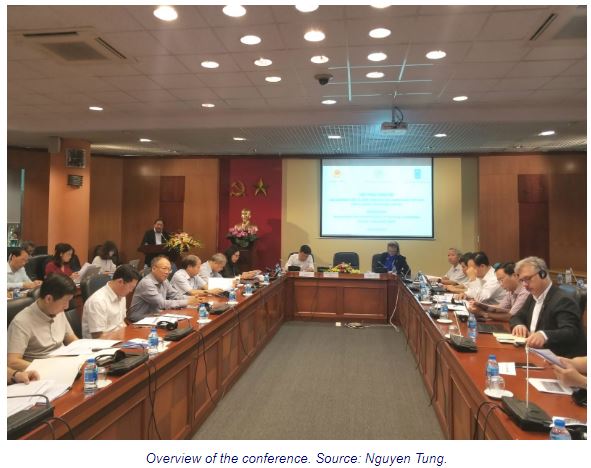High productivity key for Vietnam to pursue inclusive growth
Wiesen made the assessment at the launching ceremony of UNDP’s latest report on productivity and competitiveness of Vietnam’s enterprises on April 26.
This is the way forward for Vietnam to generate more productive jobs for its workers, enhance productivity and competitiveness, as such, Vietnamese manufacturing firms must be at the center of Vietnam’s growth strategy, Wiesen added.
Dang Nguyen Anh, vice president of the Vietnam Sociological Association, said with Vietnam’s GDP per capita on track to reach US$3,000 by 2020, Vietnam has now come to a new development phase based on efficiency and productivity.

Viet Nam’s CIP ranking improved from nearly 100th in 1990 to around 40th (close to India’s and Indonesia’s) in 2015.
|
“Existing driving forces that helped propel Vietnam to middle-income country status such as natural resources, cheap labor have gradually diminished, requiring a new growth model focusing on greater productivity, innovation and the business community with high competitiveness,” Anh said.
In recent years, Vietnam’s industrial competitiveness index (CIP), manufacturing exports and Revealed Comparative Advantage (RCA) have continuously improved compared to other regional countries. However, gaps to middle-income and developed comparator countries remain large, stated the report.
According to the report, Vietnam’s CIP ranking improved from nearly 100th in 1990 to around 40th in 2015, which is close to India’s and Indonesia’s. Vietnam’s manufacturing labor productivity, nevertheless, remained around a quarter of China’s and Malaysia’s, one third of Indonesia’s and the Philippines’, a half of India’s and Thailand’s, and just around 7% of Japan’s and South Korea’s.
While the Fourth Industrial Revolution accelerates and leaves simple skilled and repetitive manufacturing jobs at risk to automation, the majority of Vietnam’s manufacturing firms have low levels of IR4.0 readiness.
Stronger linkage between FDI and domestic sectors in focus
“This will require the government to adapt and enable experimentation and new ways of working with private enterprises to identify bottlenecks specific to each subsector, and design tailored actions to support their transformation,” Wiesen stated.
Additionally, UNDP’s report highlighted the need to focus on quality FDI that builds stronger linkages with the domestic private sector, while at the same time fostering a robust ecosystem that accelerates the movement of innovative firms up local and global value chains.
Wiesen called for platforms that bring together the government, FDI and domestic firms to generate win-win solutions that create incentives for domestic firms to invest in building their productive capacity and for FDI firms to rely more on locally supplied components and services.
Meanwhile, the state sector’s reform efforts must focus on enhancing state-owned enterprises (SOEs)’effectiveness and efficiencies, especially those at higher stages or leading local value chains with relatively high productivity and competitiveness, plus backward-forward linkages with domestic firms. Equitization of SOEs in industries/sub-sectors where domestic private firms are ready to take over leading roles from SOEs (with equitization going hand-in- hand with building capacity of domestic private firms) should be accelerated.
Public investment should aim to crowd-in domestic private sector investment. Public investment could help create demand for domestic private firms’ products and services, and thus incentives to invest in business and technology upgrades. Public investment could also provide domestic private firms with opportunities to build capacity, including through learning-by-doing and receiving technology transfers through public investment from ODA loan projects.
More importantly, domestic sector development will need to be prioritized in the upcoming Socio-Economic Development Strategy (2021-2030) and Plan (2021-2025). Key policy objectives should support domestic private firms to grow in size, accelerate transition to formalization and enhance productivity and competitiveness through development of local value chains, improved linkages within and upward movement in domestic and global value chains, with special attention to facilitate the emergence of big domestic firms to lead domestic value chains and become significant global value chain players.


 English
English




